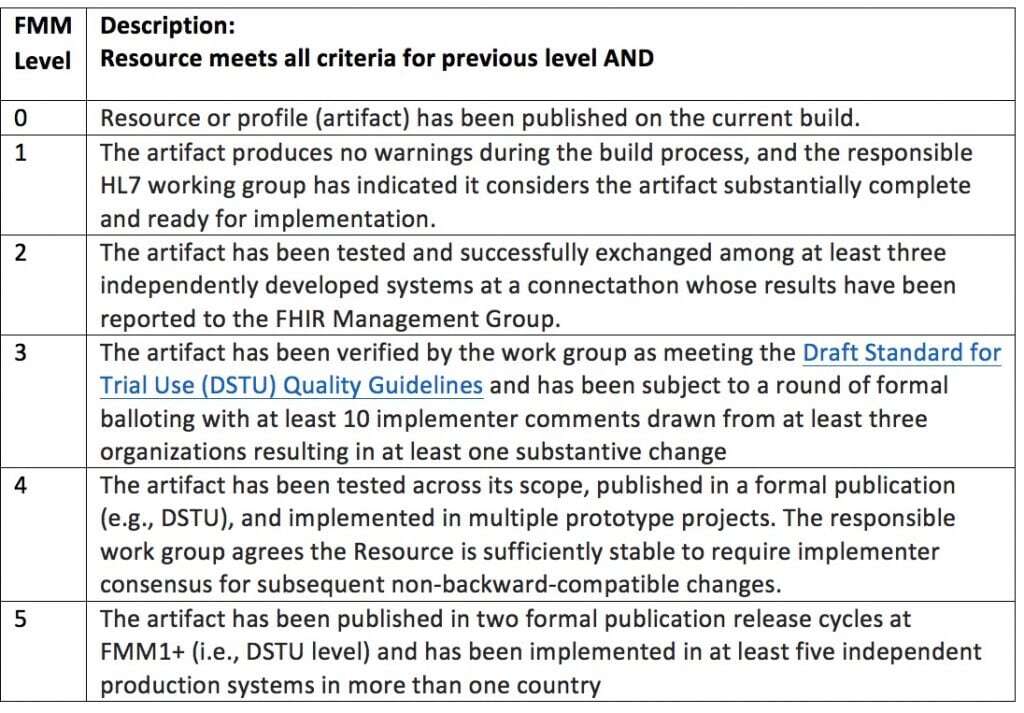The shift in focus from EHR adoption to interoperability has been accompanied by interest in rating the maturity of standards. This typically involves applying a linear rating scale to maturity with no formal definition of the criteria for that scale. Attempts to use a two-dimensional measurement for a multidimensional concept usually fail to provide useful information. They try to apply a single maturity model to a multipart standard, which may be an implementation guide consisting of hundreds of pages, while ignoring any particular use case.
The result often comes down to this: “How long has the standard existed, and how widespread is implementation?” This is entirely tangential to the interoperability enabled by the standard and to its usefulness in the future, or even for specific use cases in the near term.
Let’s use an iPhone analogy. The iPhone 2 was an early icon in the evolution of mobile technology. We all recognized that iPhone 3 was going to be better and have more functions and utility. This does not mean the iPhone 2 was not useful or should be reserved only for a few test cases. It does mean the expectations for that early model should be realistic and not confused with the potential of future versions.
A more useful maturity model has recently been developed for the HL7 FHIR standard. This FHIR Maturity Model (FMM) accompanies the release of the second version of FHIR, R2.0. It includes a number of updates and changes, in addition to the doubling of the number of FHIR Resources. R2.0 simplifies the FHIR RESTful API, extends the search and versioning capabilities, and defines a terminology service. There are also thousands of changes in response to use of the first version of FHIR.
The FMM is based on the Capacity Maturity Model (CMM), a tool for objectively assessing the processes for software development and implementation. The CMM is based, in turn, on the process maturity framework.
Rather than trying to apply a single rating to the entire standard, the FMM is applied to individual FHIR Resources. These are the base components of the FHIR specification. Each FHIR Resource has evolved separately, although FHIR profiles for a specific use case may include multiple Resources.
The FMM rating of a FHIR Resource may range from 0 to 5. The lowest level FMM0 rating requires only that the Resource is published in the current build. Advancing up the rating scale requires meeting all previous qualifications as well as increasingly broad adoption criteria. The highest level, FMM5, indicates that the Resource not only meets the criteria for all the earlier FMM levels, but it has been published in two formal publication release cycles and has been implemented in at least five independent productions systems in more than one country. The FMM will be applied to FHIR profiles and other artifacts that become part of the FHIR specification going forward.

Interoperability standards maturity is a journey, not a destination. Maturity is sometimes used as a proxy for interoperability and implementation readiness. The FHIR Maturity Model provides a much more usable perspective on such readiness. Some parts of the standard may be mature well ahead of others. Implementations based on these mature Resources and the FHIR profiles derived from them may provide great value and help to advance the standard.
Like the early versions of the iPhone, the current release of HL7 FHIR may have value for specific use cases and great potential for a much broader range of use cases in future FHIR releases. We should make the most of the current FHIR version and its potential for innovation. We should map our path forward with the expectation that FHIR will evolve like the iPhone, and it won’t be surprising if adoption has the same extraordinary trajectory.



































